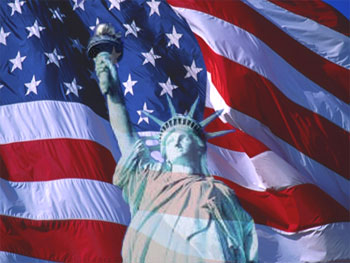“May God bless America.”
This standard is displayed by immediate family members of a person serving in the Armed Forces during a period of war. I am proud to display it as my only son Dashiell is serving in the US Navy, seeing service in the Mediterranean and Indian sea as well as the South Atlantic and Northern Pacific ocean. It has been announced his “riverene” unit is going to the waters of Kuwait and other waters off of Africa next month. This weekend he is with a few buddies as they spend Memorial Day weekend in Washington, DC, participating in the Memorial Day celebrations, plus visiting many of the monuments.
It is the tradition on this day to raise the flag to half-mast, to honor those who have died serving their country; at noon, to raise to full mast to honor those who are serving their country today. I will raise the flag in my son Dashiell's honor as he serves in the U.S. Navy and all the men and women who protect our country. Whether any war is right or wrong, on Memorial Day we give special honor to those who have served or now serve our country. My father, my uncles, my three brothers and I all served in the military
The yellow flag with the rattlesnake in parts above "Don't Tread on Me" was the first official American Flag. It was adopted by Colonel Christopher Gadsden of South Carolina, who had it approved by the South Carolina Congress. It was first flown by Commodore Esek Hopkins, commander of the new Continental fleet, who carried a similar flag in February, 1776, when his ships put to sea for the first time. On January 4, 1776 it was flown as Commodore Hopkins landed in Bermuda and recognized as an American. This is considered the first naval battle of the Revolutionary War. If there was a popular saying in the colonies, it was "Don't Tread on Me." This was aimed at the British, the Dutch, the French, the Spanish and others who were fighting to claim the new world as theirs. The settlers were a mixture, who fled the lifestyle of Europe and wanted to change their life: freedom, not rule by a monarch (dictator.) One of the first things they did was to change the inheritance law. In Europe, everything went to the eldest son. In America, it was divided among all the males (and sometimes women were named, too). First of all, social customs and things were different at the end of the 18th century. Yellow was not a "warning sign,” as it is today, but the most popular color for a flag in Colonial times. Rattlesnakes did not have the meaning that they have today, as the population had not moved out past Pennsylvania and parts of Ohio, including Louisiana and Texas, who were not even territories at the time. The rattlesnake was one of Benjamin Franklin's and New England's favorite symbols. It was on many flags. There were many farmers who found the reptile catching rodents, gophers, and they were used often as symbols on our flags and literature---not the connotation we have today from Westerns on TV and the movies. Military troops of the day carried the Gadsen flag, which flies above the Leasing News headlines. It is considered the first American flag. The official stars and stripes was to come much later, and in reality, not adopted and changed to the format we know today where stars represent the states ( not stripes) until the early 19th century. School history has many of the facts about the American Revolution incorrect, and mixed up many events to suit a "better story." For instance, the Pledge of Allegiance" was first published in a magazine called "The Youth's Companion." Authorship was claimed for James B. Upham and Francis Bellamy. In 1939 the United States Flag Association ruled that Bellamy was the author of the original pledge. The words, "under God" were added on June 14, 1954.
In pledging allegiance to the flag, stand with the right hand over the heart or at attention. Men remove their headdress. Persons in uniform give the military salute. All pledge together: “I pledge allegiance to the flag of the United States of America and to the Republic for which it stands, one Nation under God, indivisible, with liberty and justice for all.” At base, and when possible, our men at war stand at salute to the flag raising every morning, and recite the Pledge of Allegiance. And in my house, it is okay to say after reciting the pledge, “ May God bless America.” Kit Menkin |
Ten Top Stories each week chosen by readers (click here) |
Top Stories chosen by editor Kit Menkin (chronological order) |
- Bank of Walnut Creek Leasing Sold |
 |




